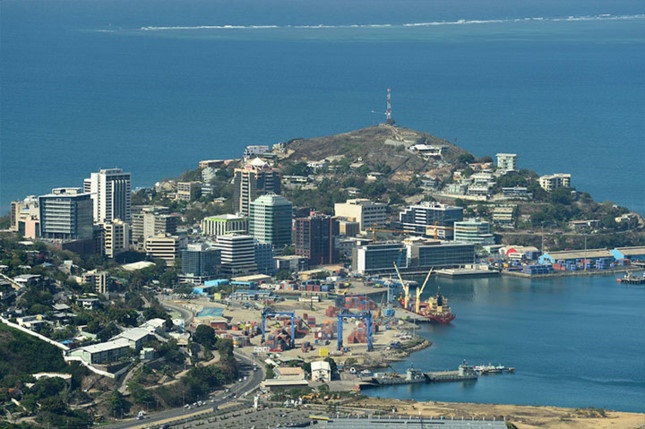What is the GNP of Papua New Guinea?

Papua New Guinea (PNG) is a country known for its diverse culture, rich natural resources, and complex economic landscape. One of the key indicators used to assess a country’s economic health is the Gross National Product (GNP). In this article, we’ll explore what GNP is, the current GNP of Papua New Guinea, and the historical timeline that has shaped this figure. We’ll also delve into statistics, facts, and provide links to resources for further exploration.
Understanding GNP
Gross National Product (GNP) is a measure of the total economic output of a country’s residents, including income earned abroad, but excluding income earned by foreign residents within the country. It reflects the economic strength of a nation by considering both domestic production and international economic activities of its citizens.
The formula for calculating GNP is:
Where:
- GDP (Gross Domestic Product) includes the total value of goods and services produced within a country.
- Net Income from Abroad includes income earned by residents from overseas investments and excludes income earned by foreign residents within the country.
GNP of Papua New Guinea
As of 2024, Papua New Guinea’s GNP stands at approximately $31 billion USD. This figure includes the income earned by PNG nationals working overseas and the returns on investments made by PNG citizens in foreign countries. PNG’s economy is heavily reliant on its natural resources, which play a significant role in its GNP calculations.
Historical Timeline of GNP in Papua New Guinea
Understanding the historical trends of GNP in Papua New Guinea offers insights into the economic evolution of the country. Below is a timeline highlighting key periods and events that have impacted PNG’s GNP:
1960s – Early Development
- 1960s: Papua New Guinea, under Australian administration, focused on agricultural development. The economy was primarily agrarian, with a GNP of around $1 billion USD.
- Late 1960s: Discovery of mineral resources led to increased foreign investment, particularly in copper mining.
1970s – Independence and Economic Expansion
- 1975: PNG gained independence from Australia. GNP saw growth due to investments in the mining sector, with a GNP of approximately $2 billion USD.
- Late 1970s: The Bougainville Copper Mine became a major contributor to GNP, providing substantial export revenue.
1980s – Resource Boom
- 1980s: Oil and gas exploration began, leading to a surge in GNP, reaching around $5 billion USD by the end of the decade.
- 1989: Bougainville conflict led to the closure of the mine, impacting GNP negatively.
1990s – Economic Challenges
- 1990s: Political instability and natural disasters affected economic growth. Despite these challenges, GNP hovered around $8 billion USD.
- Mid-1990s: The establishment of the Kutubu Oil Project boosted GNP temporarily.
2000s – Recovery and Growth
- 2000s: Economic reforms and increased foreign direct investment (FDI) in mining and agriculture helped stabilize GNP at around $10 billion USD.
- 2009: Commencement of the PNG LNG Project marked a significant economic milestone, pushing GNP to new heights.
2010s – LNG Era and Economic Diversification
- 2010s: PNG’s GNP experienced substantial growth due to LNG exports, with figures reaching approximately $20 billion USD by 2015.
- 2018: Earthquake affected LNG production but recovery efforts and diversification into agriculture and tourism contributed to resilience.
2020s – Current Trends
- 2020: The global pandemic caused disruptions, but PNG’s GNP managed to maintain a level of $28 billion USD, thanks to ongoing mineral exports.
- 2024: GNP continues to grow, with projections suggesting a steady increase driven by sustainable development and infrastructure investments.
Key Statistics and Facts
- Natural Resources: PNG’s economy heavily relies on its natural resources, with mining, oil, and gas contributing over 30% to GNP.
- Agriculture: Agriculture employs over 80% of the population and contributes approximately 20% to GNP. Coffee, cocoa, and palm oil are major exports.
- Foreign Investment: FDI plays a crucial role in boosting GNP, with significant investments in mining and infrastructure.
- Remittances: Remittances from PNG nationals working abroad contribute positively to GNP, providing a stable income stream for many families.
- LNG Projects: The PNG LNG Project is a key driver of economic growth, contributing significantly to export revenues and GNP.
Economic Challenges
Papua New Guinea faces several challenges that impact its GNP:
- Infrastructure Deficits: Poor infrastructure limits economic development, affecting sectors like agriculture and tourism.
- Political Instability: Governance issues can deter investment and hinder economic progress.
- Environmental Vulnerabilities: Natural disasters, such as earthquakes and floods, pose risks to economic stability.
Resources and Further Reading
For more information on PNG’s GNP, economic trends, and development strategies, consider exploring the following resources:
- World Bank – Papua New Guinea Economic Overview
- Asian Development Bank – Papua New Guinea Key Indicators
- PNG Government – National Statistics Office
Conclusion
Papua New Guinea’s GNP is a reflection of its economic resilience and potential. While the country has made significant strides in leveraging its natural resources to drive economic growth, challenges remain. Addressing infrastructure deficits, promoting sustainable development, and enhancing governance will be crucial in ensuring long-term economic prosperity for PNG. As the nation continues to navigate its economic journey, understanding its GNP trends provides valuable insights into its economic health and future opportunities.